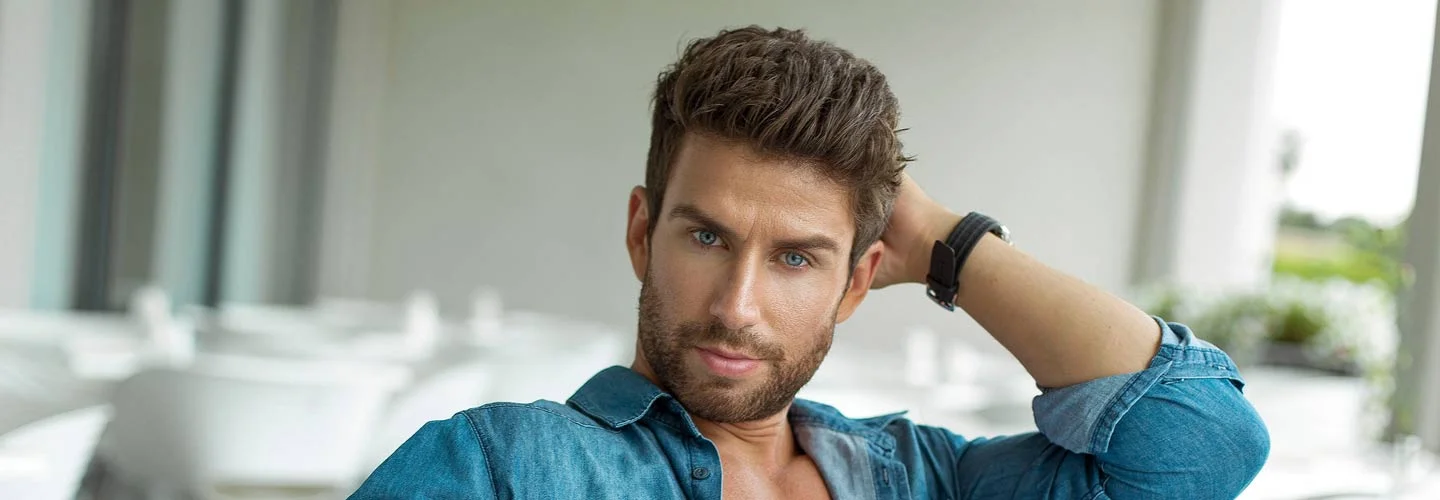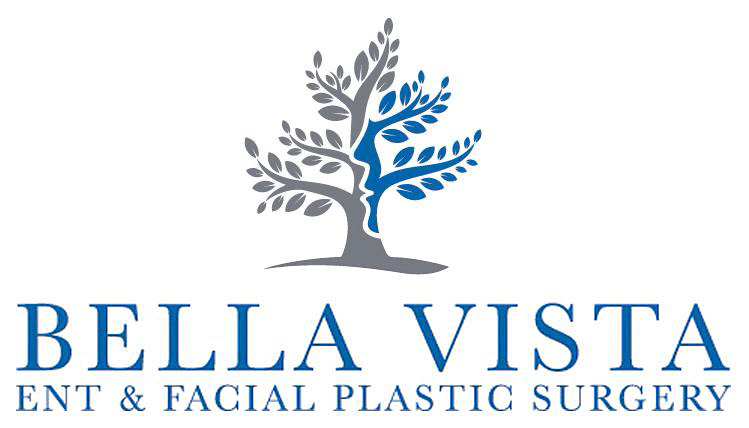Cosmetic Procedures
Professional Cosmetic Care
For Agoura Hills, Simi Valley, Camarillo, Malibu, and Ventura Patients Offered at Our Thousand Oaks Offices
Your body is a work of art that is as unique as your personality.
Let the team of Drs. Jeffrey Feinfield and Glenn Waldman help you achieve your aesthetic goals. Bella Vista ENT & Facial Plastic Surgery specializes in state-of-the-art techniques for the safest, most effective facial cosmetic enhancements.
Facelift vs Fillers
Face
Reconstruction of Facial Defects After Skin Cancer Removal (Mohs Reconstruction)
Mohs surgery is a highly specialized treatment for the total removal of skin cancer. This method differs from all other methods of treating skin cancer by the use of complete microscopic examination of all the tissues removed surgically as well as detailed mapping techniques to allow the surgeon to remove the entire lesion.
This is an office technique in which the skin is removed a layer at a time, processed, then examined under a microscope to ensure complete removal of the cancer. This process may take anywhere from one hour to half a day or longer for large skin cancers. After obtaining clear margins, a secure dressing will be applied, and you will be released.
Scar Revision
Scar revision is a surgery to improve or reduce the appearance of scars. It also restores function, and corrects skin changes (disfigurement) caused by an injury, wound, or previous surgery.
There are various types of scars, such as keloid, hypertrophic, facial scars, and others. There are also many factors that affect the severity of scarring, including the size and depth of the wound, the blood supply to the area, the thickness and color of your skin, and the direction of the scar. For those that are bothered by the appearance of a scar, our Scar Revision procedure may offer a solution.
Dermabrasion involves removing the upper layers of the skin with a special wire brush called a burr or fraise. New skin grows over this area. Dermabrasion can be used to soften the surface of the skin or reduce irregularities.
Massive injuries such as burns can cause loss of a large area of skin and may form hypertrophic scars. These types of scars can restrict movement of muscles, joints and tendons. Surgery removes extra scar tissue. It involves a series of small cuts (incisions) on both sides of the scar site. The result is a thin, less noticeable scar.
Skin grafting involves taking a thin layer of skin from another part of the body and placing it over the injured area. Skin flap surgery involves moving an entire, full thickness of skin, fat, nerves, blood vessels, and muscle from a healthy part of the body to the injured site. These techniques are used when a large amount of skin has been lost in the original injury.
Tissue expansion is used for breast reconstruction, as well as for skin that has been damaged due to birth defects and injuries. A silicone balloon is inserted beneath the skin and gradually filled with salt water. This stretches the skin, which grows over time.
Earring Hole/Earlobe Repair
The ear lobe is the most delicate and vulnerable area of the outer ear as it is made up of delicate skin and tissue with no cartilage support. Traditionally it is the favored site for the earring. An earlobe can get torn if the earring is pulled upon with excess force or if heavy earrings are worn over time.
During your initial appointment, I will examine the ear lobe and decide whether a surgery is needed or not. Earlobe repair is a short procedure done at the doctor’s office with local anesthesia. It usually involves cleaning the edges of the tear and re-stitching the open lobe. This can even be done if your earlobe was torn a long time ago. There should be little to no pain during your recovery.
A follow up appointment is necessary to have the stitches removed within one to two weeks after the surgery. Once the stitches are removed, massage your ear lobe regularly. You will be able to pierce your ears again after four to six months.
Ear Pinning (Otoplasty)
Ear surgery typically serves two functions: setting prominent ears back closer to the head, and reducing the size of large ears. Surgery may also be helpful for “lop ear,” “cupped ear” and “shell ear,” large or stretched earlobes, and lobes with large creases and wrinkles. Surgeons are also able to construct new ears for patients who are missing them from injury or other causes.
Although surgery for adults is available, the operation is most often performed on children aged four to 14, as ears are almost fully grown by age four, and early surgery can prevent a child from being teased in school. General anesthesia is recommended for very young patients, while local anesthesia and a sedative are used for older children and adults.
Neck Liposuction
Neck liposuction is performed to remove excess fat beneath the chin and tighten loose skin in the neck.
A less invasive alternative to a facelift, the procedure can produce dramatic results in the patient whose chin and/or neck has sagged with age or after weight loss.
Chin Augmentation
A small or retrusive chin can disrupt the entire balance of the face. It especially makes the nose appear much larger and more prominent than it would otherwise.
In order to correct this imbalance a simple procedure can be performed.
This involves placing a solid silicone implant through a small hidden incision in the mouth on the internal surface of the lower lip.
The implant remains fixed to the jawbone and usually does not move or cause any discomfort.
This procedure can be done under local or general anesthesia and requires minimal recovery time.
Eyelid Contouring (Blepharoplasty)
Surgical alterations of the skin and fat of the upper and lower eyelids can rejuvenate puffy, sagging, or tired-looking eyes. In the upper the eyelid, this is accomplished by creating a carefully placed incision in the natural crease and removing excess skin and fat. In the lower eyelid, this will usually involve removing or repositioning excess or bulging fat through an internal incision (transconjunctival) as well as removing or tightening loose, sagging skin through an external incision under the lash-line or a chemical peel.
The procedure can be performed in the office under local anesthesia or in the surgical center under general anesthesia depending on the patient’s health and / or preference. The majority of patients will experience very little pain following this procedure. However, swelling and bruising around the eyes is expected and will usually last 7-10 days.
Brow Lift
Transblepharoplasty browlift is a less invasive alternative to the traditional browlift procedure. It is performed through the same incision as that used during blepharoplasty to remove excess skin and fat from the eyelids.
This allows patients to experience the results of both a browlift and blepharoplasty without having to undergo the full procedures.
The transblepharoplasty procedure combines the effects of removing the upper eyelid skin and repositioning the brow through one simple approach.
In addition, unlike other browlift procedures, this procedure can be performed in the office under local anesthesia.
Full or Mini Face/Neck Lift
While there are many different variations of face / neck lifting procedures, the general principles are always the same. Excess or loose skin, fat, and muscle must be removed or recontoured in order to achieve a smooth, more youthful appearance.
A full face / neck lift involves extensive lifting and repositioning of the majority of the skin and deeper tissues of the face and neck. This is performed under general anesthesia and requires 7-10 days of downtime for recovery.
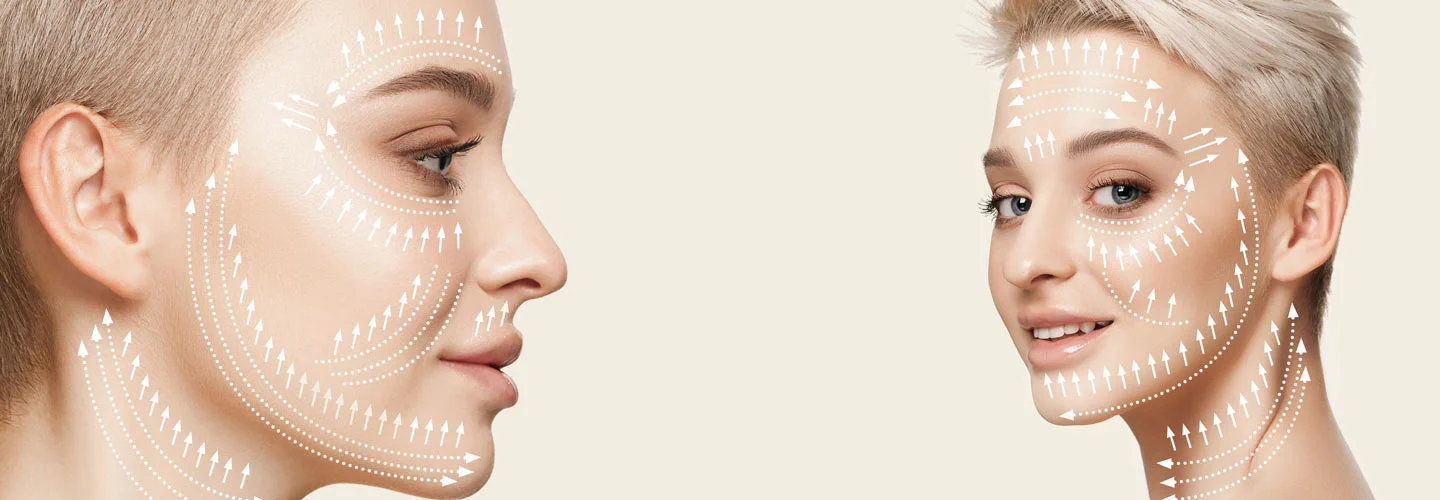
Fillers & Peels
TCA Peels®
TCA Peels® are medium-depth peels that treat fine surface wrinkles, superficial blemishes and pigment problems using trichloroacetic acid (TCA). TCA Peels® are the preferred chemical solution for darker-skinned patients and may be used on the neck and other areas of the body.
Multiple treatments may be required. Treatments only last 10-15 minutes, and recovery time is fairly short.
Juvéderm®
Juvéderm® is an injectable gel that gently reverses many signs of aging in the face, including fine lines and wrinkles, crow’s feet, thinning lips and loosening skin. It can also “plump up” the lips, sculpt the cheeks, and restore a youthful oval shape to the face. It is made with hyaluronic acid, a natural substance found in the body that works with collagen and elastin to give volume and support to the skin.
Results last about six to nine months and can last even longer with follow-up treatments.
Dysport®
Dysport® is an FDA-approved injection treatment used to reduce the appearance of fine lines and wrinkles by relaxing facial muscles in the forehead. Similar to BOTOX® Cosmetic, Dysport® is injected directly into the site of wrinkles to prevent the underlying muscles from contracting.
Dysport® injections are made from the bacterium Clostridium botulinum, the same protein used in Botox® injections.
BOTOX® Cosmetic
BOTOX® Cosmetic is commonly used to reduce or eliminate the appearance of facial wrinkles. It is injected under the skin into areas surrounding the eyes, forehead and mouth to smooth crow’s feet, frown and worry lines, and lines on the neck.
Made from a purified protein, BOTOX® relaxes wrinkles and gives the face a rejuvenated look. BOTOX® may also be useful for migraine headaches, excessive sweating, and eye and neck muscle spasms.
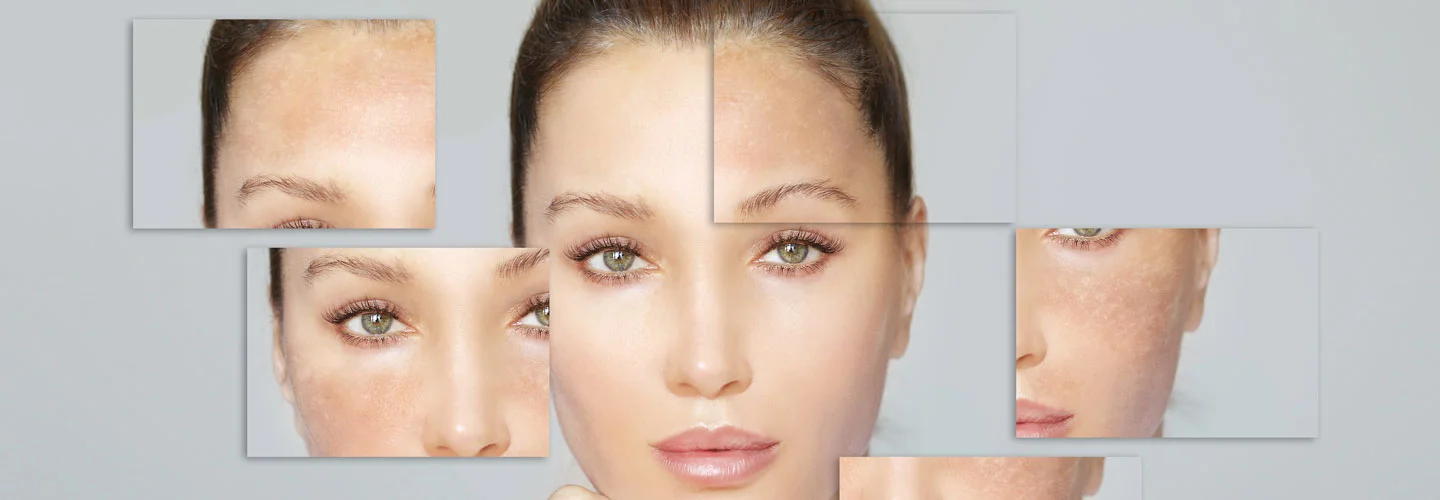
Nose
Ethnic Rhinoplasty
Although the same basic principles and surgical techniques are applicable to multiple different ethnicities, there are some specific issues that differ when operating on Asian, Eastern European, Hispanic, Middle Eastern, and African American noses.
In general, these ethnicities have a different anatomy than Caucasian noses and thus require different surgical considerations.
For starters, most of these ethnicities mentioned have thick skin envelopes. This creates a situation in which it is much more difficult to achieve fine definition and much more challenging to perform a reductive rhinoplasty.
When too much bone or cartilage is removed from a nose with thick skin in an attempt to make the nose too small, the result is an amorphous, ill-defined nose. This result can often look reasonable from the side view, but will never look good from the front or angled view.
The solution to this dilemma is to be cautious with reduction and focus more on cartilage addition.
Appropriate cartilage grafting, carefully placed and secured, will add structural support as well as fill out the skin envelope in order to create definition. It frequently holds true that when the proportions and relationships throughout the nasal contour are optimized, the nose will take on a much more pleasing cosmetic appearance regardless of overall size.
In addition, many of the ethnicities mentioned above have thin, weak cartilage. This too can only be addressed with meticulous cartilage grafting to strengthen and support the framework of the nose. Lastly, the concept of ethnic rhinoplasty raises the issue of whether the patient would like to retain elements of his or her ethnicity in the nasal contour or abandon them for a completely different look. This requires clear communication and photo analysis during the pre-operative appointments.
Secondary (Revision) Rhinoplasty
Secondary rhinoplasty (also referred to as revision rhinoplasty) is the operation performed on a patient who has undergone one or more rhinoplasties prior to the current procedure. Although it involves many of same considerations and techniques as primary rhinoplasty, it is in many ways very different than primary rhinoplasty. Secondary rhinoplasty is usually a more involved, lengthy operation that requires the surgeon to be able to react to a variety of unknowns, depending on what is encountered during surgery.
This procedure frequently involves a very tedious dissection through scar tissue in order to elevate the skin and mucous membranes from the underlying cartilage and bone. It also frequently requires the use of additional structural material in order to rebuild the support system of the nose and create the necessary contour changes. In a primary rhinoplasty this structural material will usually be obtained by borrowing cartilage and / or bone from the septum.
However, in most secondary rhinoplasties, adequate septal cartilage and / or bone is rarely available. Alternative choices for structural material are the patient’s own ear cartilage, rib cartilage, or cranial bone; as well as cadaver rib cartilage or various artificial implant materials (i.e. silicone, gortex, Porex).
Most of these choices have significant drawbacks and do not meet the criteria of a desirable implant material for secondary rhinoplasty. A desirable implant material must be at low risk for infection or extrusion. It must be in abundant supply. It must be strong enough to maintain the necessary support and withstand the forces of scar contracture without changing shape or position. And it must possess the ability to be contoured in order to recreate the natural elements of the nose.
Even when ear cartilage is taken from both ears, this only yields a small amount of cartilage. In addition, ear cartilage is curved, thin, and soft. It works well for minimal cosmetic grafting, but never works well for grafting large areas or grafting that is required to maintain structural support. Cranial bone, on the other hand, offers more material to work with and is strong enough to maintain structural stability.
However, it is difficult to contour, difficult to secure in various positions, and cannot mimic the natural feel and texture of nasal cartilage. Cadaver rib cartilage is also in abundant supply and is easier to secure in position. It is also a closer match to natural nasal cartilage than cranial bone. However, it is often obtained from very elderly people who have partially calcified rib cartilage, making it difficult to reliably contour and maintain its shape. It also has more of a tendency to warp or change over time.
All artificial implant materials are always a bad idea for nasal surgery. Over time, they have a high rate of infection and extrusion and often need to be removed.
Therefore, the only material which meets all of the criteria explained above is the patient’s own rib cartilage. I have found that when removed in a safe, reliable manner and contoured using the correct technique, rib cartilage is unparalleled. It allows for incredible transformations that many patients have thought or have been told are not possible.
Primary Rhinoplasty
The size and shape of a nose is determined by the inherent size, shape, and consistency of an individual’s cartilage, bone, and overlying skin. While everyone has the same basic anatomical elements, the specific arrangement and contour of these elements varies greatly from person to person and is influenced by ethnicity and age.
Rhinoplasty is the surgical art of re-shaping the nose. Primary rhinoplasty refers to the operation performed on a patient who has never undergone rhinoplasty in the past. First, inconspicuous incisions are made and the skin of the nose is lifted from its underlying bone and cartilage framework. Next, some of the bone and/or cartilage is removed or rearranged, and the nasal support system is reconstituted, thus providing a newly shaped and structurally sound nose. The skin is then redraped over the new frame and the incisions are closed.
A soft packing material is usually placed inside the nose and removed the day after surgery. Small stitches and an external splint are usually removed one week after surgery. The majority of swelling, bruising, and discomfort is experienced during the first week following surgery, and most people return to school or work after this time period.
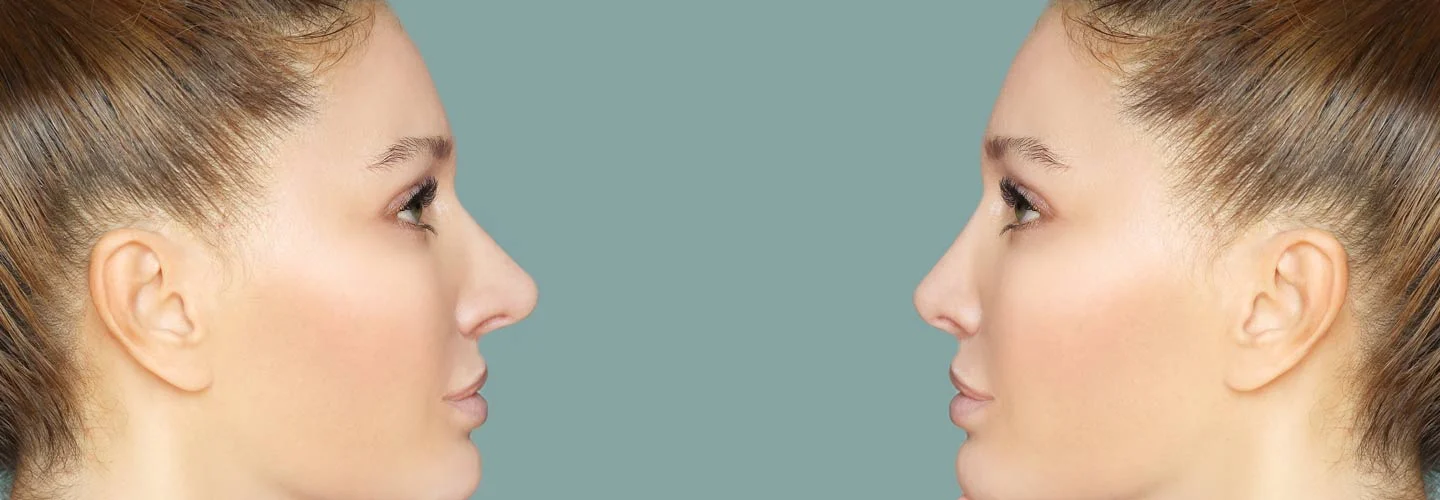
Hair Restoration
Eyebrow Restoration
Although they may seem insignificant, the eyebrows play a major role in the appearance of the face. Hair loss in this area may alter a patient’s appearance and affect their self-esteem. Temporary measures to restore the appearance of the eyebrows often produce unrealistic results and cannot be completely customized for each individual patient. Eyebrow restoration is a surgical procedure to recreate natural-looking eyebrows for patients seeking a more professional solution.
Restoring missing eyebrows can be achieved through several different techniques, similar to those performed to restore hair on the head, including a transplant, scalp-to-eyebrow pedicle flap or other means.
The most common approach for eyebrow restoration involves the use of single-hair micro-grafts inserted a designated angle with the use of a tiny needle to help achieve each patient’s goals for the shape, length and overall look of their new eyebrows. Depending on the extent of hair loss and desired goals, multiple treatment sessions may be required. Waxing or trimming of the new eyebrows may be required after surgery to maintain an ideal appearance.
Rogaine® for Women
Rogaine® is the only non-surgical hair restoration treatment currently available for women, who tend to experience more successful outcomes with this time-tested medication than men.
Other forms of medication can impact the hormone levels of a male fetus and are not safe for women who are pregnant or may become pregnant during treatment.
Dr. Waldman may combine a course of Rogaine® with surgical approaches for the most effective results.
Rogaine®
Minoxidil, commercially known as Rogaine®, is an FDA-approved, over-the-counter topical medication for the treatment of hair loss in both men and women. It has been used since the late 1980s as a 2% solution, with a 5% solution now available as well that is considered significantly more effective.
Rogaine® is applied directly to affected areas of the scalp to impede hair loss and stimulate the regrowth of hair. Although Rogaine® is not considered a miracle treatment, it is often effective in 30% of patients, with slightly higher success rates for females. This treatment is most effective for patients with recent hair loss caused by androgenetic alopecia, as well as those suffering from relatively small areas of hair loss.
It may take up to four months before the results of Rogaine® are visible. Patients may experience side effects such as burning, stinging or redness at the application site. It is important to notify the physician of any unusual side effects or if no results are present after six months. Rogaine® is not effective for all patients.
PROPECIA®
PROPECIA® is used to restore scalp hair for men with male pattern hair loss (androgenic alopecia), a hereditary condition that can cause receding hairlines, thinning and/or balding on the top and front of the scalp. In clinical studies, most men who took PROPECIA® reported an increase in scalp hair within the first 12 months and enjoyed continuing improvement throughout treatment. Some men have also reported that PROPECIA® slows further hair loss.
PROPECIA® tablets are taken once a day. Healthy hair grows about half an inch each month, so results may not appear for three months or more. If there is no improvement within one year, further treatment is unlikely to be effective.
Side effects of PROPECIA® are uncommon but may include sexual side effects (less than 2% of men), allergic reactions, breast tenderness and enlargement and testicular pain. PROPECIA® can affect the results of the prostate cancer screening exam known as a PSA test, so patients should tell their physician that they are taking PROPECIA® if they are undergoing the test.
PROPECIA® is intended for men only. Pregnant women who come into contact with the active ingredient in PROPECIA® should contact a doctor because it may cause abnormalities in a developing male fetus.
Temporal Peaks Hair Restoration
Temporal peaks restoration restores the natural hairline by recreating the temporal peaks, the areas in the front of the head that are common early targets of hair loss. This area is often a source of embarrassment and self-consciousness because of its prominent location.
Restoration in the temporal peaks can be performed with precisely-positioned transplantation for a youthful, natural-looking appearance.
